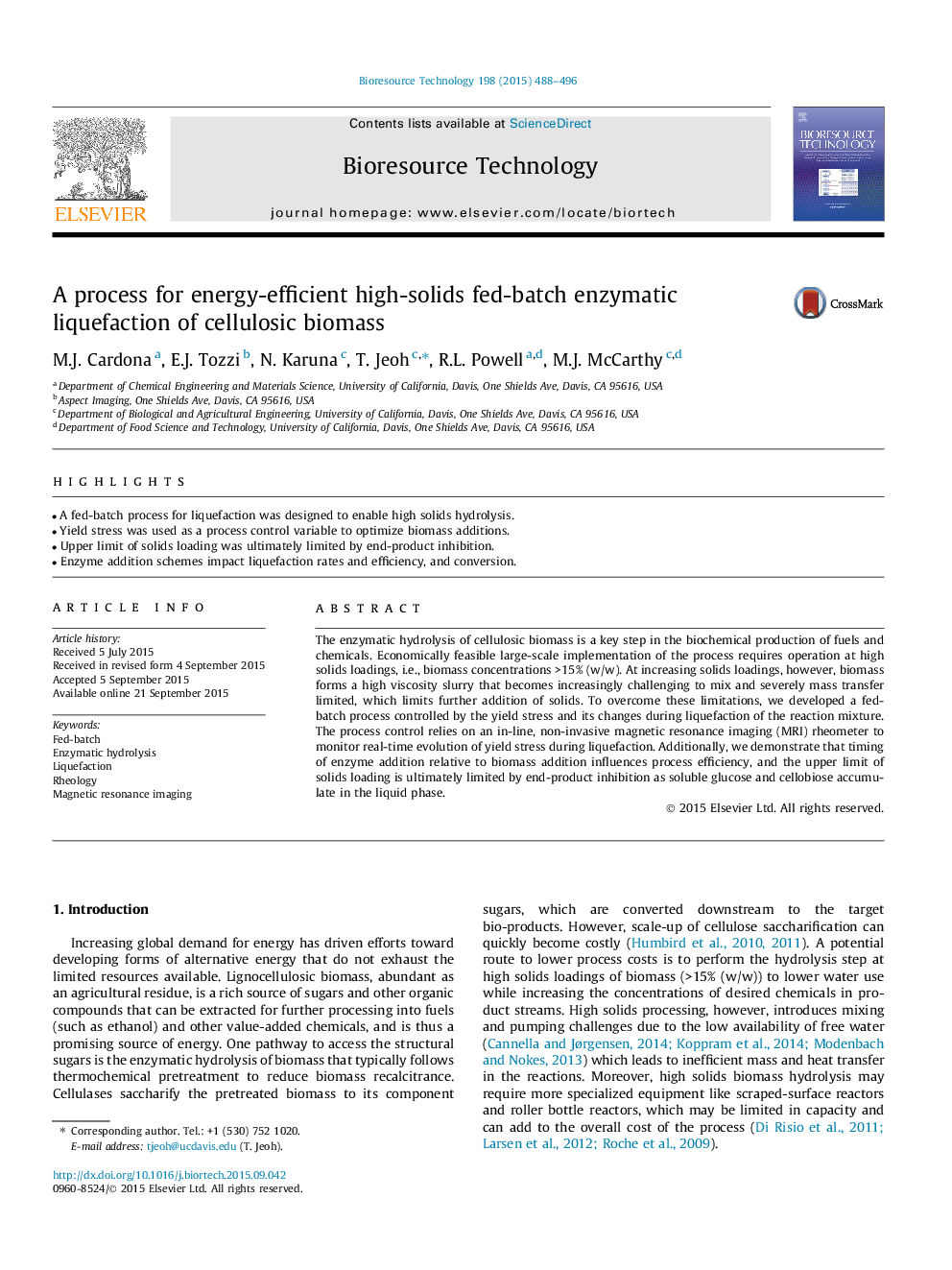| Article ID | Journal | Published Year | Pages | File Type |
|---|---|---|---|---|
| 679452 | Bioresource Technology | 2015 | 9 Pages |
Abstract
The enzymatic hydrolysis of cellulosic biomass is a key step in the biochemical production of fuels and chemicals. Economically feasible large-scale implementation of the process requires operation at high solids loadings, i.e., biomass concentrations >15% (w/w). At increasing solids loadings, however, biomass forms a high viscosity slurry that becomes increasingly challenging to mix and severely mass transfer limited, which limits further addition of solids. To overcome these limitations, we developed a fed-batch process controlled by the yield stress and its changes during liquefaction of the reaction mixture. The process control relies on an in-line, non-invasive magnetic resonance imaging (MRI) rheometer to monitor real-time evolution of yield stress during liquefaction. Additionally, we demonstrate that timing of enzyme addition relative to biomass addition influences process efficiency, and the upper limit of solids loading is ultimately limited by end-product inhibition as soluble glucose and cellobiose accumulate in the liquid phase.
Related Topics
Physical Sciences and Engineering
Chemical Engineering
Process Chemistry and Technology
Authors
M.J. Cardona, E.J. Tozzi, N. Karuna, T. Jeoh, R.L. Powell, M.J. McCarthy,
